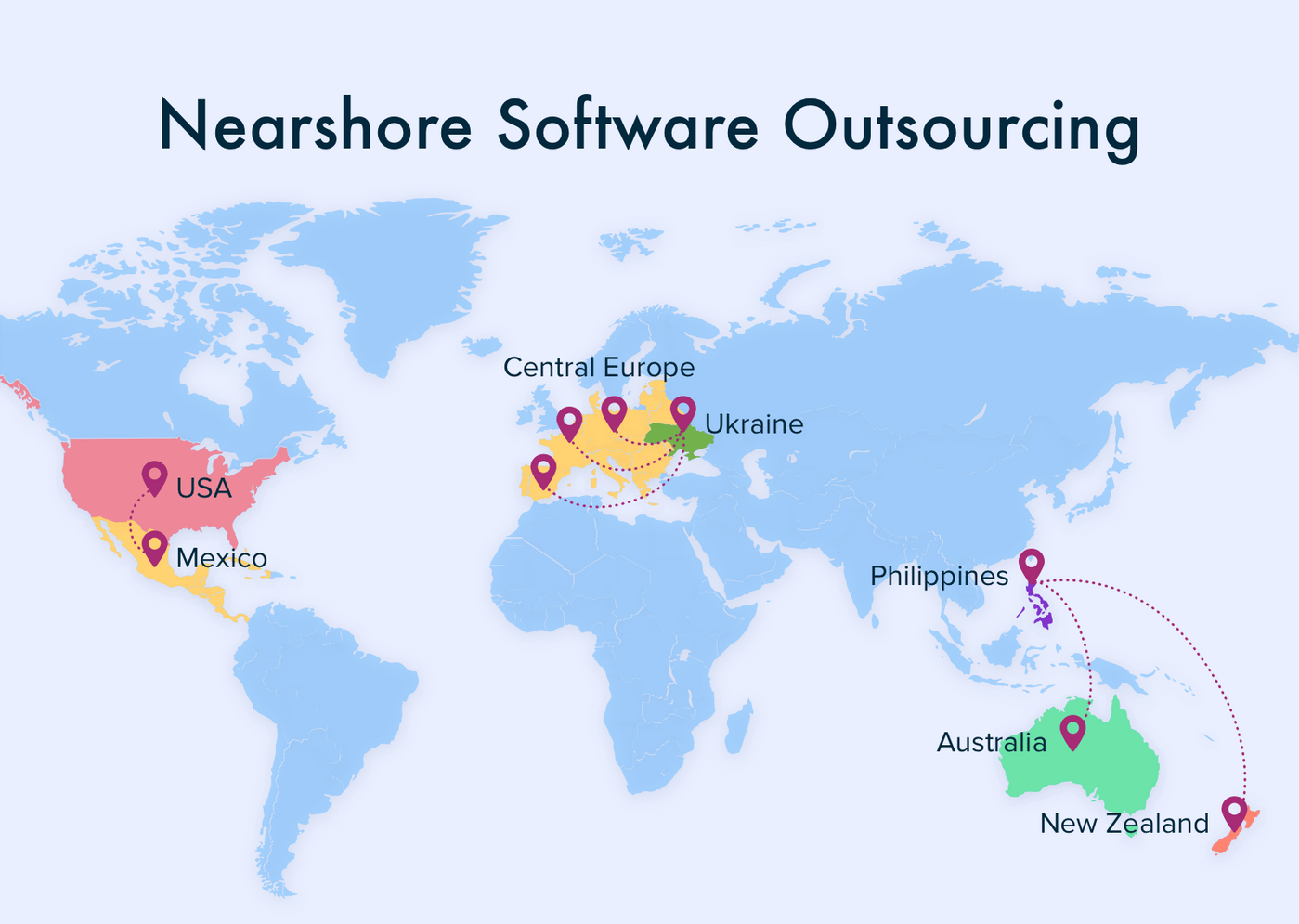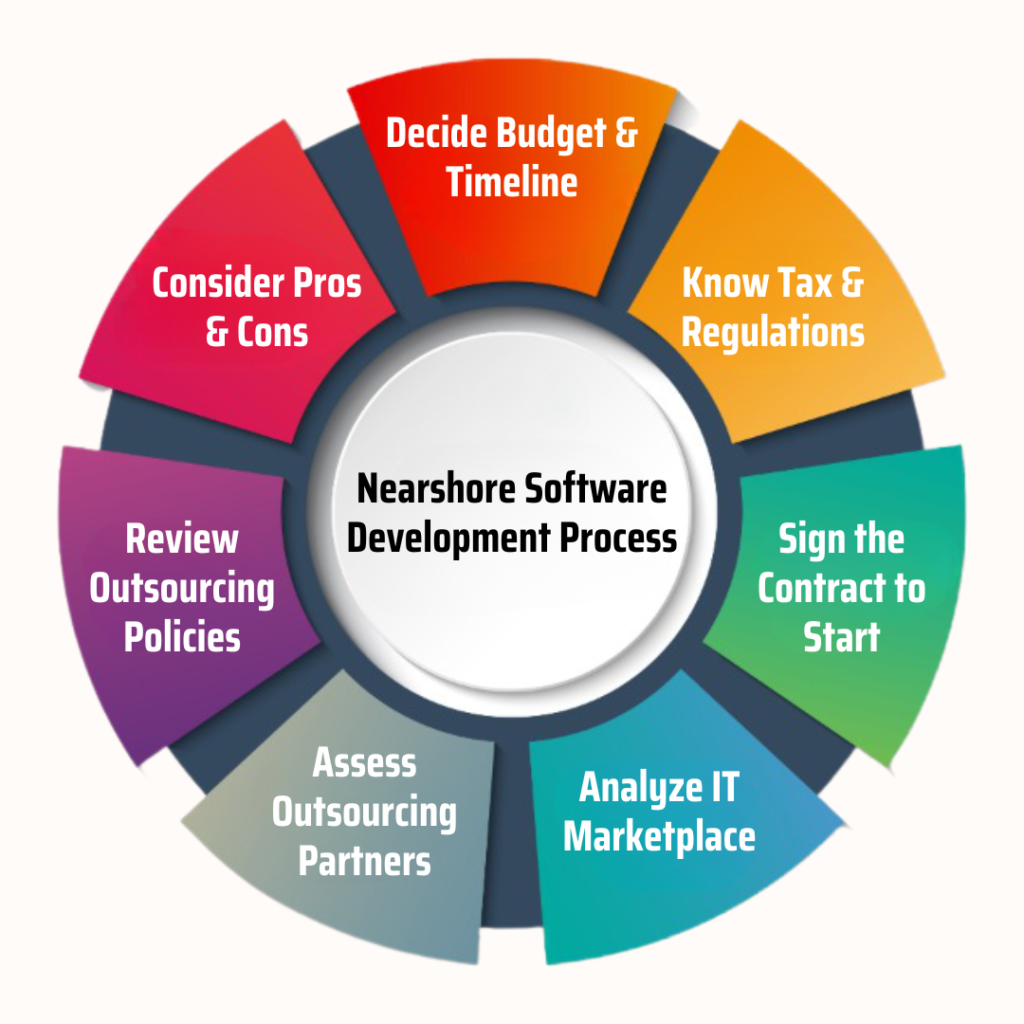Nearshore software development outsourcing offers a strategic approach to enhancing productivity and fostering collaboration across borders. This method allows businesses to leverage talent from neighboring countries, leading to cost-effective solutions and streamlined processes. Dive into the world of nearshore software development outsourcing to explore its benefits and best practices for successful implementation.
Definition of Nearshore Software Development Outsourcing

Nearshore software development outsourcing refers to the practice of contracting software development services to a company located in a nearby country or region. This model offers several advantages compared to other outsourcing options, such as offshoring or onshoring.
Benefits of Nearshore Outsourcing
- Proximity to the client’s location, leading to easier communication and collaboration.
- Similar time zones, reducing delays in project delivery and enhancing real-time interactions.
- Cultural affinity and compatibility, fostering a better understanding of business practices and work ethics.
- Potential cost savings compared to onshore outsourcing, while maintaining quality standards.
Popular Nearshore Locations for Software Development Outsourcing
- Mexico: Known for its strong IT talent pool and close proximity to the United States.
- Costa Rica: Emerging as a hub for software development due to its skilled workforce and stable political environment.
- Argentina: Offering competitive rates and a growing tech industry, especially in areas like mobile app development.
Importance of Cultural Compatibility
Cultural compatibility plays a crucial role in nearshore outsourcing relationships as it helps in establishing trust, smooth communication, and shared values between the client and the outsourcing partner. Understanding cultural nuances can lead to successful project outcomes and long-term partnerships.
Factors to Consider When Choosing a Nearshore Software Development Partner
When selecting a nearshore software development partner, several key criteria should be taken into consideration to ensure a successful collaboration. Factors such as expertise, cultural compatibility, communication, and cost-effectiveness play a crucial role in determining the right partner for your project.
Expertise and Experience
- Look for a partner with a proven track record of successful software development projects in your industry.
- Evaluate their technical skills and expertise in relevant programming languages and technologies.
- Consider the team’s experience in working on similar projects and their ability to meet your specific requirements.
Cultural Compatibility
- Choose a partner whose work culture aligns with yours to ensure smooth collaboration and understanding.
- Consider factors such as time zone differences, work ethic, and communication styles to avoid any potential conflicts.
- Ensure that the partner’s values and approach to project management match your own for a harmonious working relationship.
Communication and Project Management
- Effective communication is key to the success of any outsourcing project. Choose a partner with clear and transparent communication channels.
- Look for a team that provides regular updates, feedback, and progress reports to keep you informed throughout the project lifecycle.
- Evaluate their project management processes and tools to ensure efficient collaboration and timely delivery of milestones.
Cost-Effectiveness
- While cost is an important factor, it should not be the sole determining factor when choosing a nearshore software development partner.
- Consider the overall value and quality of service provided by the partner in addition to their pricing structure.
- Aim to strike a balance between cost-effectiveness and quality to achieve the best results for your project.
Best Practices for Managing a Nearshore Software Development Team
Effective management of a nearshore software development team is crucial for the success of any outsourcing project. By implementing best practices, you can ensure seamless collaboration, efficient communication, and a strong team culture.
Strategies for Effective Communication, Nearshore software development outsourcing
Effective communication is key to the success of any software development project. When working with a nearshore team, it is important to establish clear communication channels and protocols. Regular video calls, instant messaging platforms, and project management tools can help facilitate real-time communication and keep everyone on the same page.
Tools and Technologies for Collaboration
Utilizing tools and technologies that enable seamless collaboration is essential when managing a distributed team. Project management tools like Jira, Trello, or Asana can help track progress, assign tasks, and manage deadlines. Version control systems like Git also play a crucial role in ensuring code consistency and collaboration among team members.
Managing Time Zone Differences
One of the biggest challenges of nearshore software development is dealing with time zone differences. To overcome this challenge, establish overlapping work hours where team members from both locations can collaborate in real-time. Additionally, utilizing scheduling tools and setting clear expectations regarding availability can help mitigate the impact of time zone variations.
Fostering a Strong Team Culture
Building a strong team culture is essential for the success of any outsourcing setup. Encourage team bonding activities, celebrate achievements, and promote open communication to foster a sense of unity among team members. Regular team meetings, virtual coffee breaks, and team-building exercises can help create a cohesive and motivated nearshore software development team.
Trends and Innovations in Nearshore Software Development Outsourcing

As the nearshore software development outsourcing industry continues to evolve, several trends and innovations are shaping the way companies approach their software development needs.
Impact of Remote Work on Nearshore Outsourcing
The rise of remote work has had a significant impact on nearshore outsourcing, allowing for greater flexibility and access to a wider talent pool. Companies are now able to collaborate with nearshore teams seamlessly, regardless of geographical boundaries.
Artificial Intelligence in Nearshore Software Development
Artificial intelligence is playing a crucial role in the future of nearshore software development. From automating repetitive tasks to improving decision-making processes, AI is enhancing the efficiency and accuracy of software development projects.
Innovative Practices by Nearshore Providers
- Utilization of Agile methodologies to improve project management and delivery timelines.
- Implementation of DevOps practices to streamline development and operations processes.
- Integration of advanced cybersecurity measures to ensure data protection and compliance.
- Adoption of cloud technologies for enhanced scalability and cost-effectiveness.
Epilogue

In conclusion, nearshore software development outsourcing presents a wealth of opportunities for organizations seeking to optimize their operations and expand their global reach. By embracing this model, companies can harness the power of diverse talent pools, innovative technologies, and efficient communication strategies to drive success in the ever-evolving digital landscape.
Questions and Answers
What is the primary advantage of nearshore software development outsourcing?
Nearshore outsourcing allows businesses to access skilled resources in close geographical proximity, leading to better communication, cultural alignment, and cost savings compared to offshore outsourcing.
How can companies ensure effective communication with a nearshore software development team?
Utilizing project management tools, conducting regular video conferences, and establishing clear communication protocols can help facilitate seamless interaction and collaboration with a nearshore team.
What role does language proficiency play in nearshore outsourcing relationships?
Language proficiency is crucial in ensuring smooth communication and understanding between the client and the nearshore development team, reducing the risk of misinterpretation and enhancing project outcomes.
